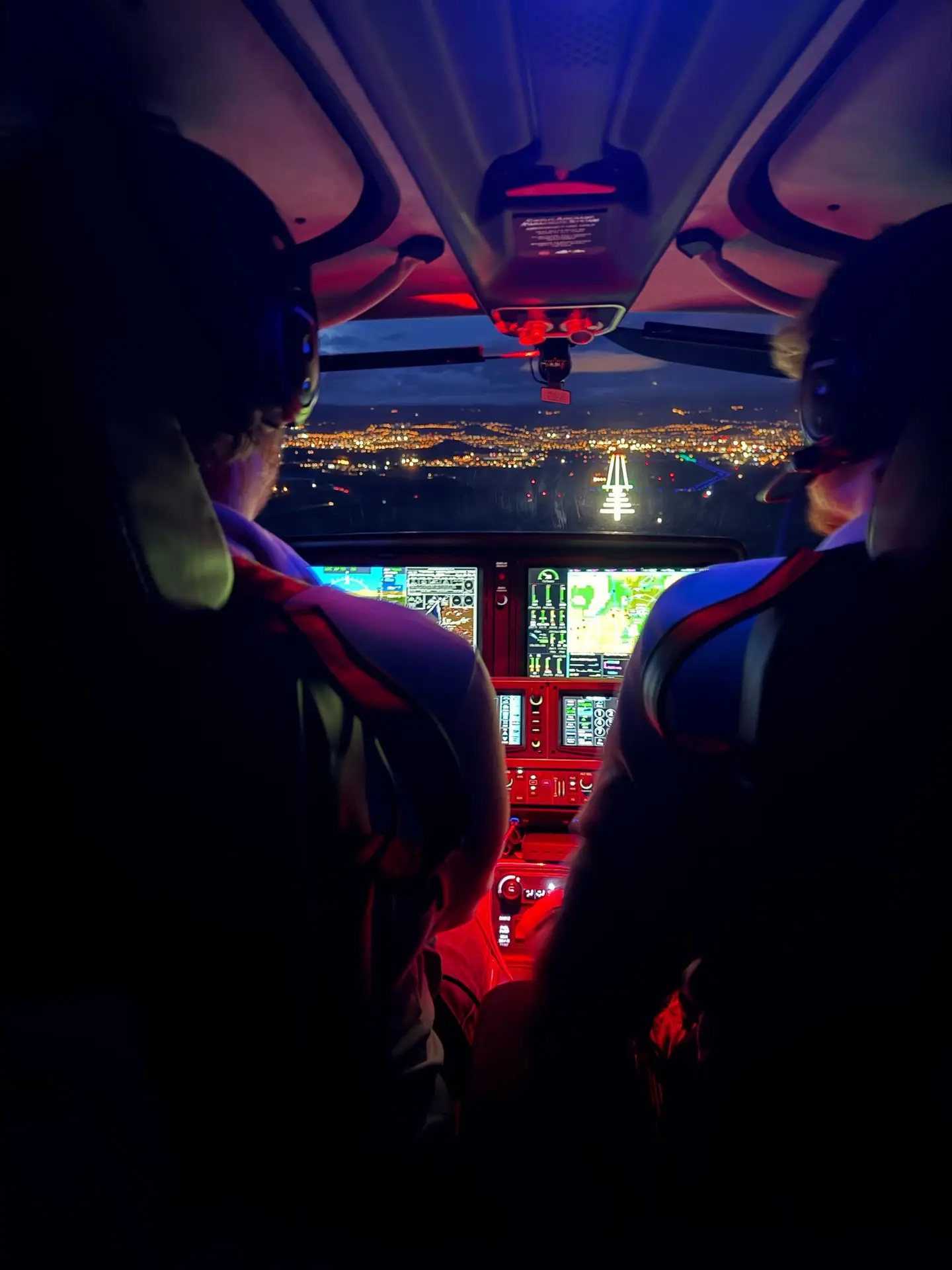Flying for the Lens: A Photo Mission to Saint-Pierre in a Cessna 172
30 - 31 may 2024 | Photo mission | VFR | Northsea-operations
Not every flight begins with a lesson plan or navigation exercise — some start with an unexpected phone call. That’s how this adventure began on Tuesday, 28 May, when I got a call from a client who specializes in aerial photography of offshore objects. Was I available on 30 May to fly to Saint-Pierre (LFDP) to photograph a ship? A tight fit in the schedule, but in aviation, "impossible" doesn’t exist.
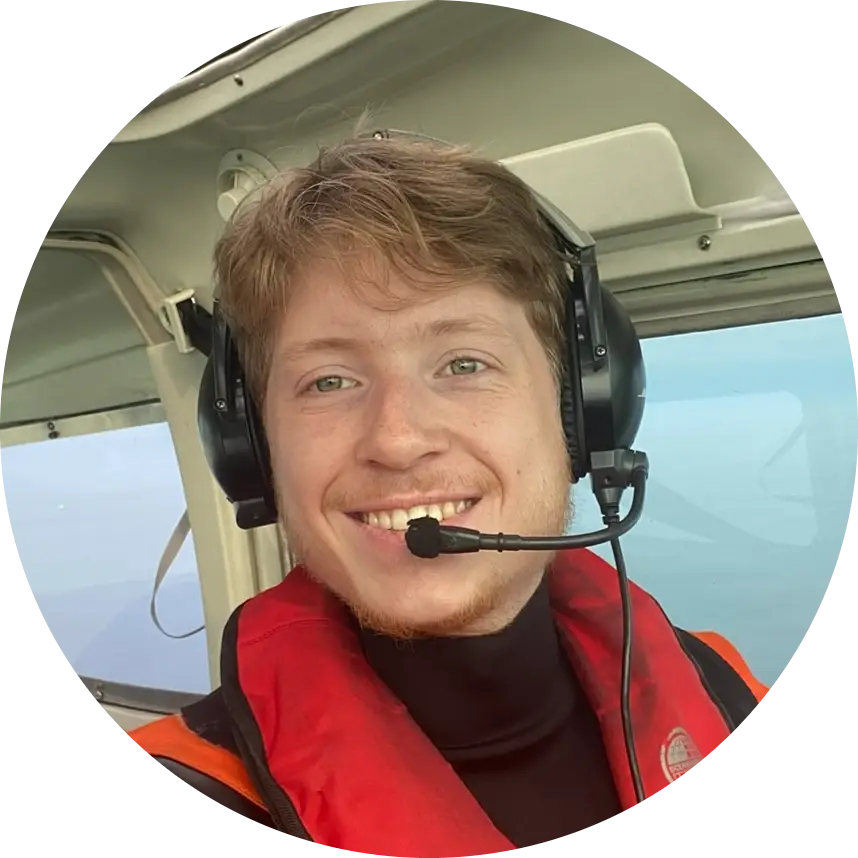
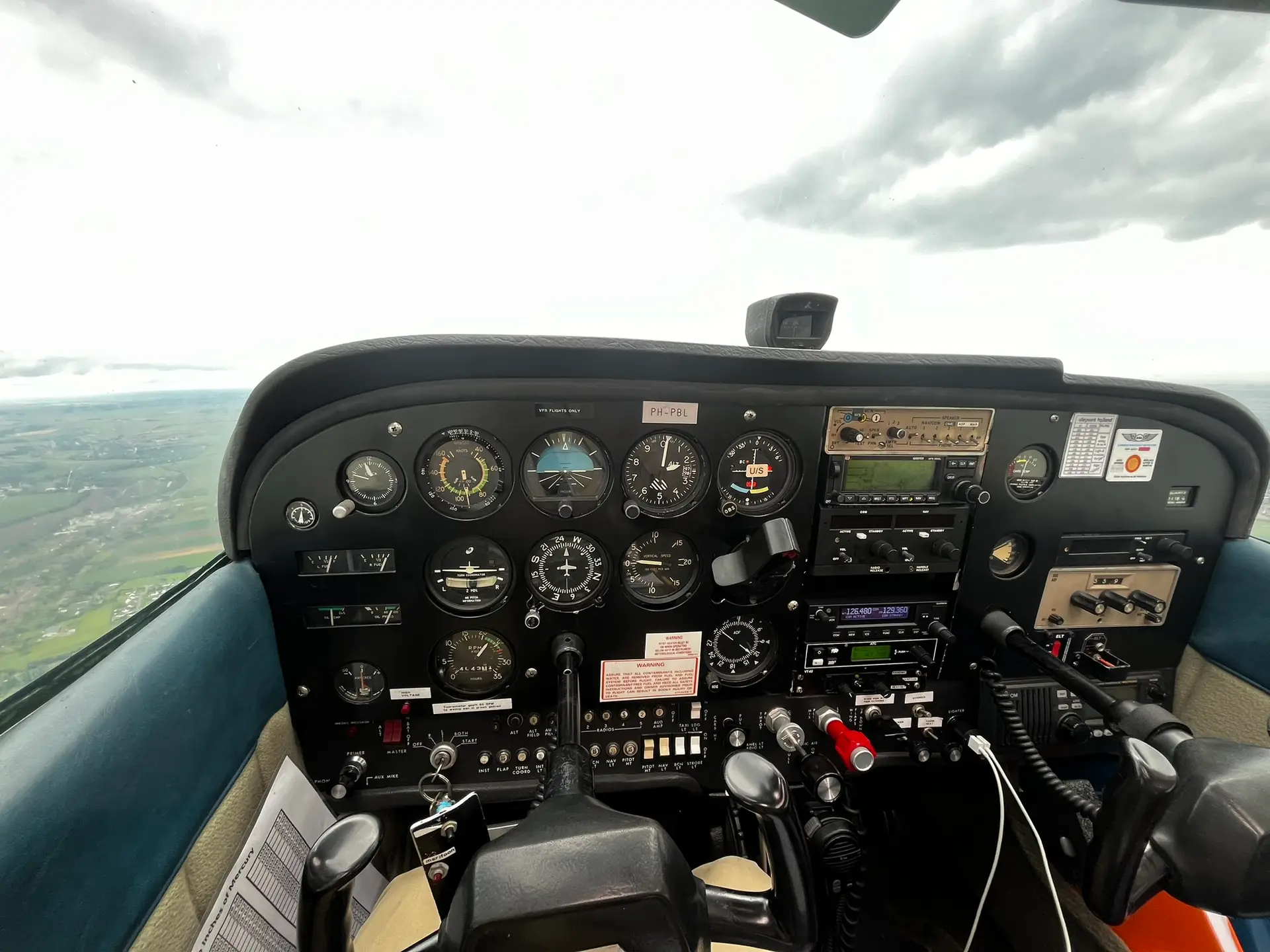
A Special Aircraft for a Special Mission
The mission would be carried out in a heavily modified Cessna 172 — anything but standard. It was equipped with long-range tanks, tip tanks, quick egress doors, two ELTs, a marine VHF radio, and gear for extended overwater operations. That meant dry suits, life vests, two handheld ELTs, and a life raft on board. During the photo sessions, we flew low and slow over open water — typically around 200 feet at a ground speed of 60 knots. These flights are some of the most intense I’ve ever flown.
To make photography easier, the passenger side window has been changed to go all the way up. In addition, the rear passenger windows can come out completely, giving the photographer more room to move around with the lens.
Weather Challenges: From Antwerp to Orléans
On 30 May, the client picked me up in Seppe (EHSE). Our first leg took us to LFOD, but the route wasn’t easy. From Antwerp deep into France, we encountered low clouds, rain, and poor visibility. Despite its modifications, the Cessna had no modern avionics and was VFR-only. Navigating visually through this weather was a true challenge. Every 15 minutes, I was speaking to a new ATC frequency, requesting clearances through busy airspace due to the deteriorating conditions — a perfect mix of stress, focus, and satisfaction.
LFOD turned out to be a simple but efficient stop: asphalt runway, no tower, minimal facilities — but crucially, self-service AVGAS 100LL. We refueled quickly, stretched our legs, and pressed on toward our destination: Saint-Pierre.
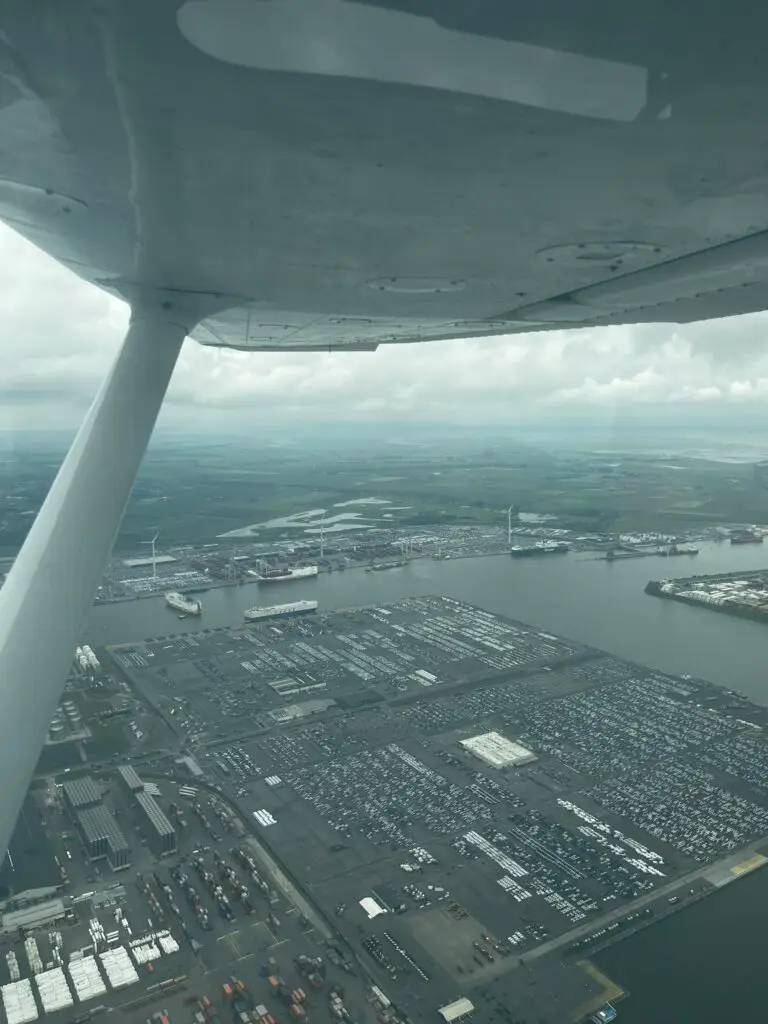
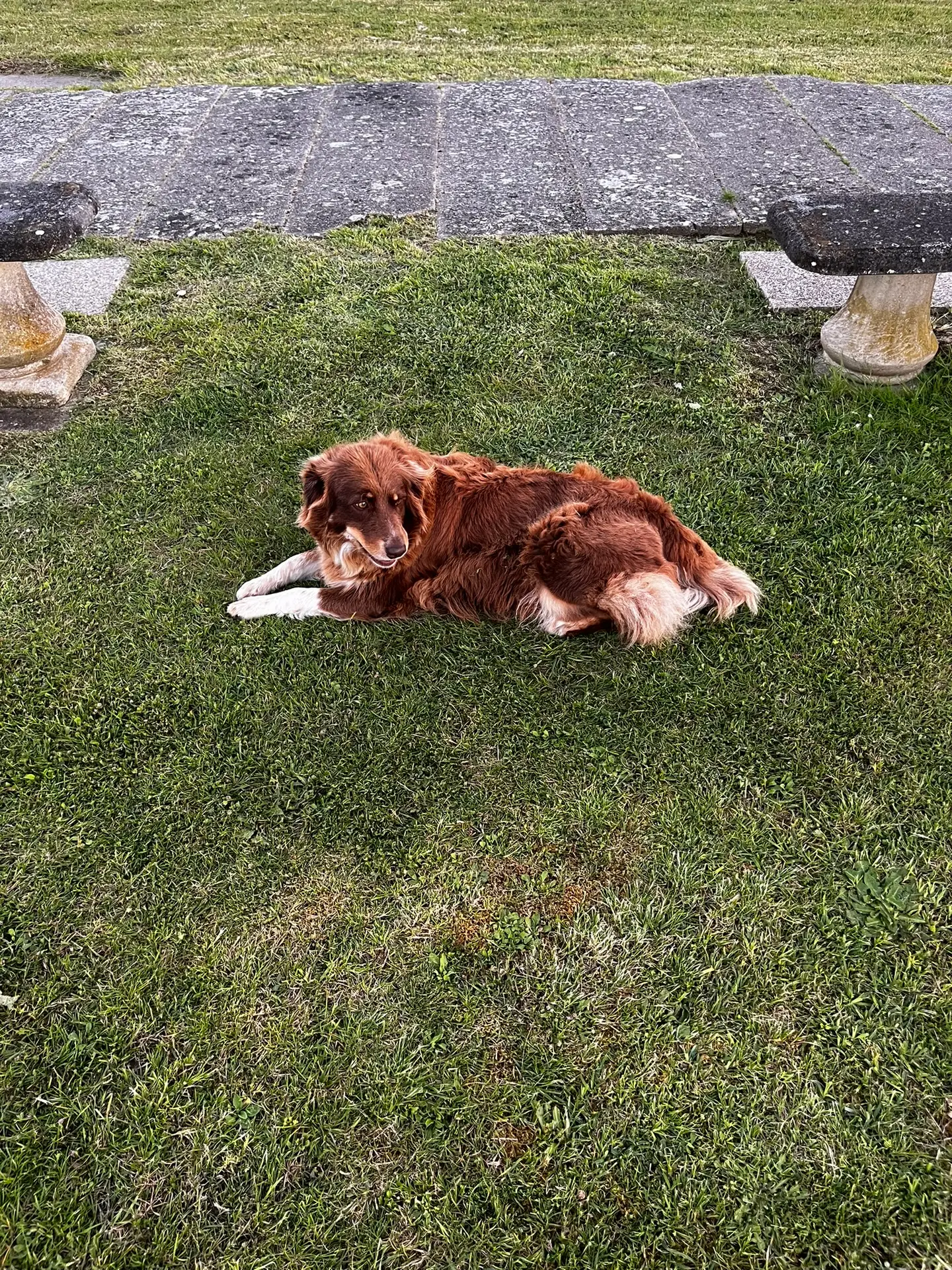
Arrival in Saint-Pierre (LFDP)
LFDP is a 1000-meter grass strip with no active control. When we landed, no one was around. No landing fees, no paperwork — just an AVGAS pump and a phone number. After refueling, we reached someone from the airfield who brought bicycles to rent. We pedaled to the nearby village, checked in at our hotel, grabbed a bite, and got ready for the evening flight.
Photo flight at sunset and sunrise
The ship we came for — carrying a load of "boring" monopiles (the foundations for wind turbines) — wouldn’t be photographable until the next morning. Since the client had never been to the area, we decided to go up that evening. We captured lighthouses, harbors, and local landmarks in beautiful calm weather, right during the golden hour. As LFDP is not night-operational, we returned right after sunset, then cycled back to the hotel to rest for the real mission.
After a local breakfast at the market, we returned to the airfield the next morning. Everything on board was checked, dry suits zipped, vests secured, ELTs ready. The photo flight went flawlessly: circling low over the sea around the ship carrying the monopiles. It’s always fascinating how "boring" objects can seem mundane to us but are incredibly valuable for photographers and their clients.
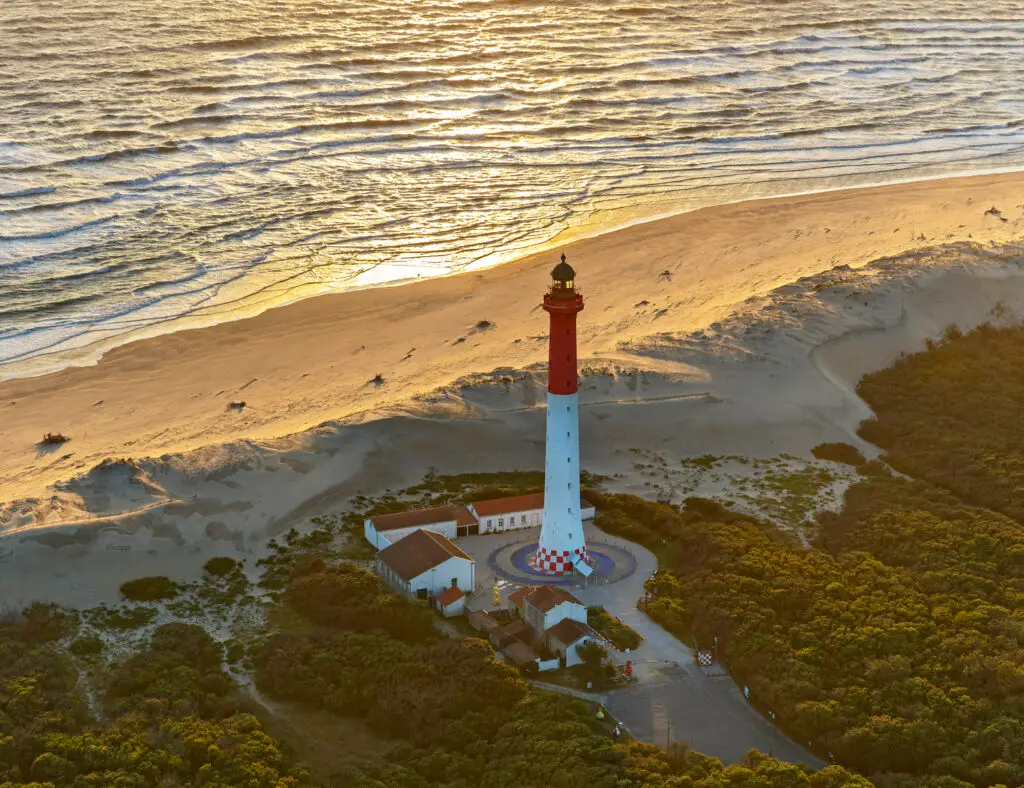
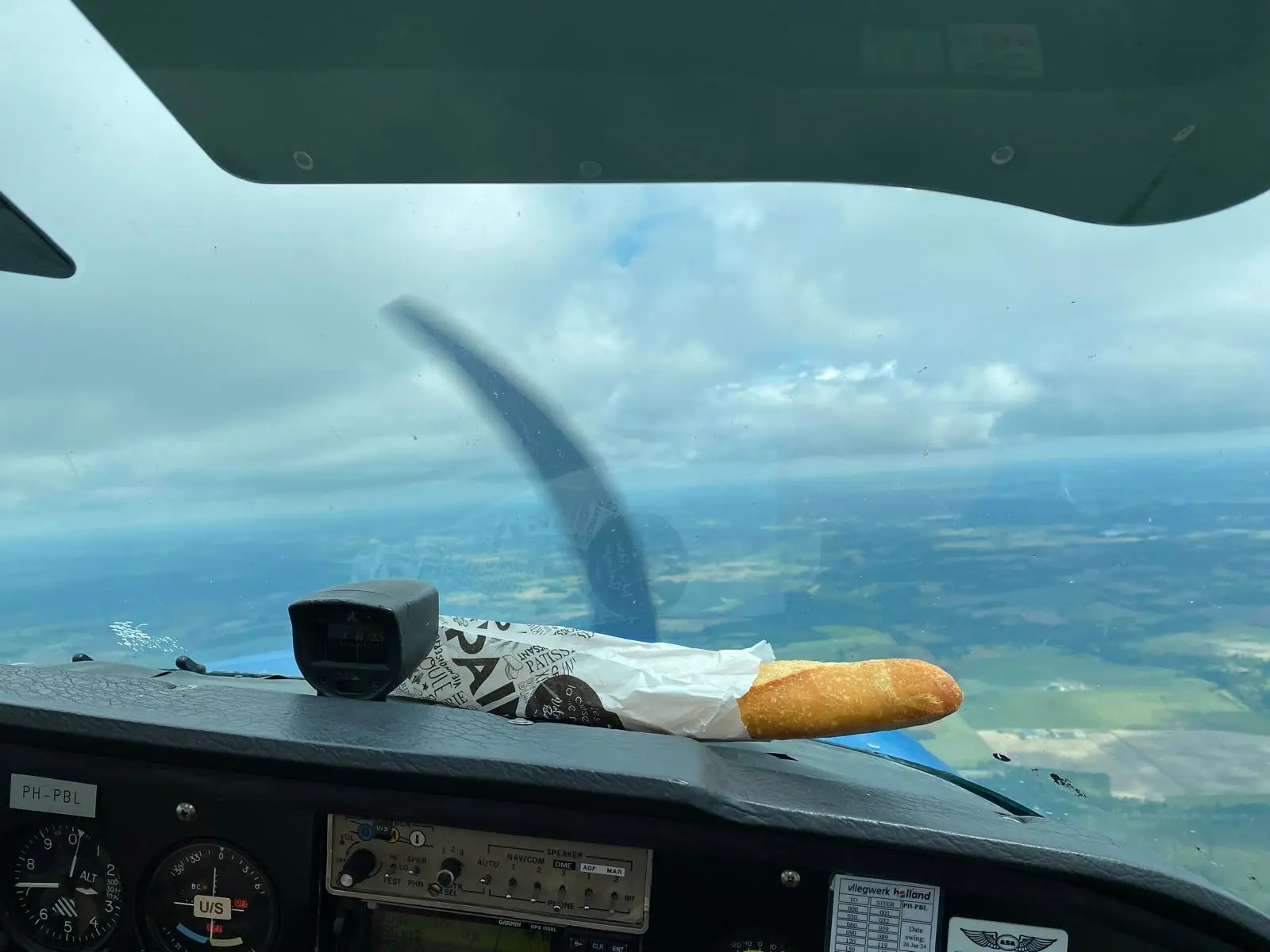
The Return Trip: AVGAS and Dodging Showers
After the shoot, we returned to LFOD to refuel — once again pleasantly surprised by the AVGAS price. The flight back to Seppe was just as challenging as the outbound leg. The weather remained unstable, and we had to carefully dodge showers along the route. Eventually, we reached EHSE safely, where the client flew the final leg to his home base himself — one of the reasons he got his PPL in the first place: flexibility and passion.
Interested in a Unique Mission with an Experienced Pilot?
Whether you're an aerial photographer, maritime professional, or adventurous traveler with a unique mission in mind — I’d be happy to help you carry it out. From last-minute assignments to technically demanding operations, I’m available as safety pilot or PIC. Safety, precision, and professionalism come first — with adventure included.
